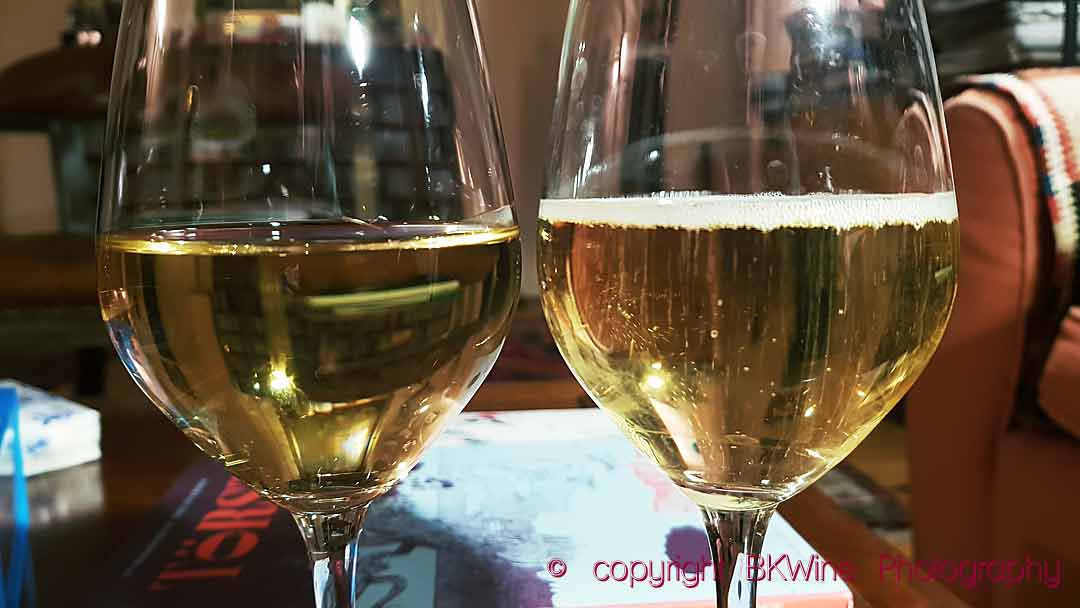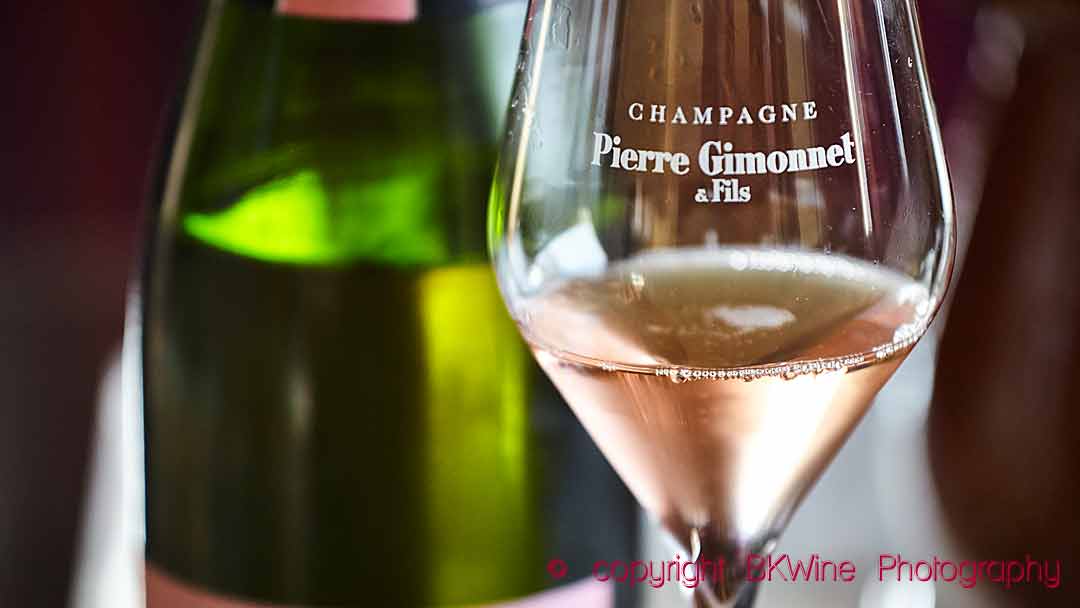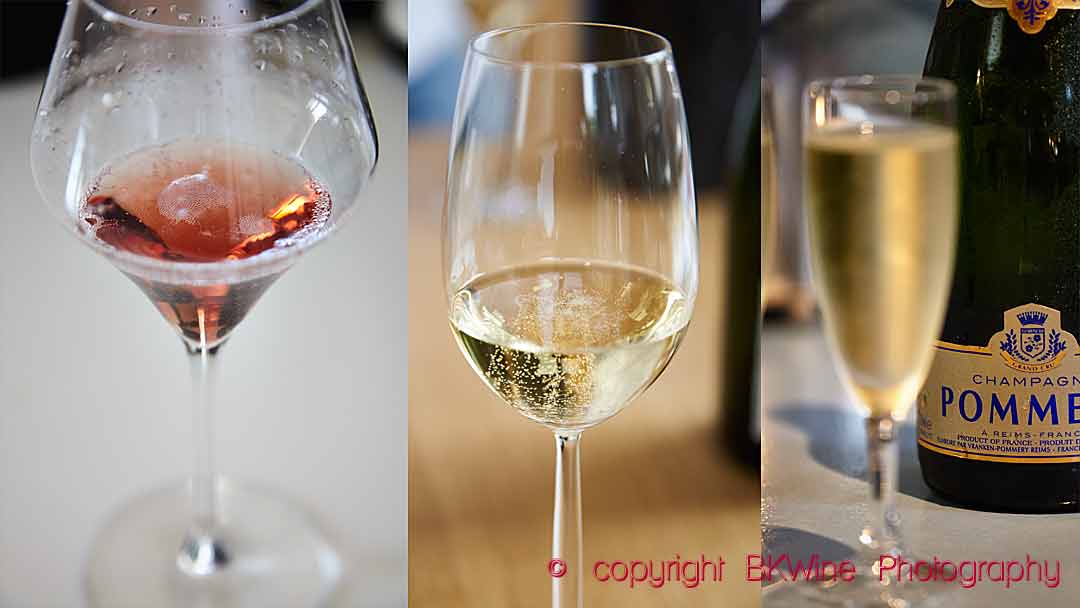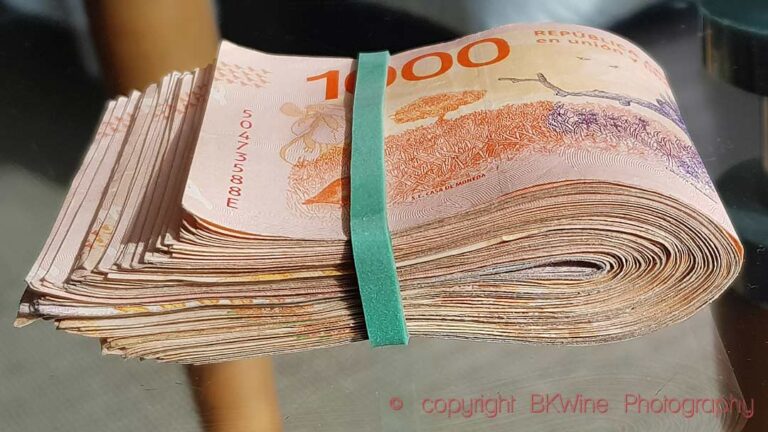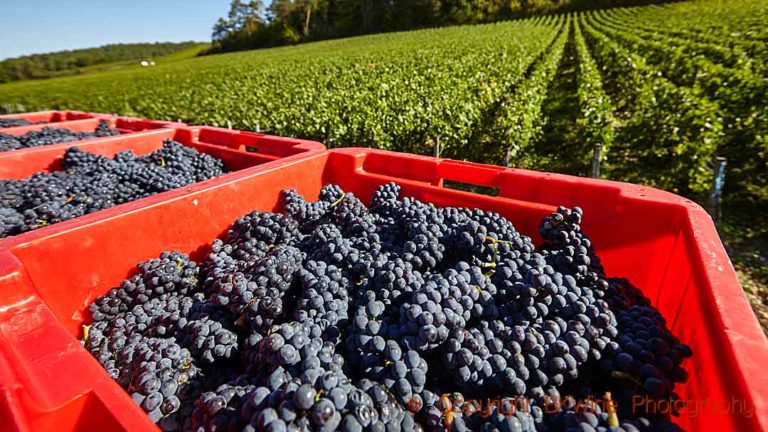It certainly looks festive with bubbles in the glass of a sparkling wine. It is also beautiful. And then it adds some atmosphere. Small, fine bubbles and lots of bubbles are a sign that it is a quality champagne (or other sparkling wine). Lesser-quality sparkling wines have large and fewer bubbles. Is that not it? —No, that’s not true, the bubbles depend more on the glass than on the wine. This was well illustrated by our New Year’s champagne.
Any New Year’s resolutions? Why not: “Forget some myths about wine.” For example, “The bubbles in the glass are a sign of the champagne’s quality”, or “many small fine bubbles are good; few bubbles indicate a simple wine”. It’s not like that.
This video shows it with all desirable clarity:
These are two seemingly identical glasses. The left glass shows almost no bubbles at all. The right glass has plenty of bubbles.
Both glasses had just been filled with wine a few minutes ago. It i, therefore, identical wine, served simultaneously in both glasses. A champagne of very good quality from the Côte des Blancs. According to the rule of thumb, one would conclude that the left glass does not contain a quality sparkling wine. But that is obviously wrong.
Dramatically different. By chance, it happened on New Year’s Eve.
The glasses are virtually identical, from the same manufacturer, Spiegelau “Expert”. They have been washed identically, hand-washed and thoroughly rinsed under running water. They have not been dried with a towel but self-dried. They have both been in the cupboard for a few days. We have used them both for at least ten years. But they were produced at different times, perhaps with a slightly different process.
What is the difference? Well, who knows? In any case, it is not that the wine in the left glass is simple and the right one good quality. Nor that one glass is dirty and the other clean. Nor that one was dried with a towel, and the other was not.
If I’d venture a guess, the difference may be due to the fact that the glasses were manufactured in two somewhat different ways. Maybe a slightly different glass mass? (Glass “paste”?) One glass may have a very hard and smooth glass mass, and the other (right) has become a little more worn over the years. However, you cannot see any visual difference between them. Or a glass mass that is simply rougher on the surface.
The conclusion is clear, very clearly illustrated: How the bubbles look in the glass is NOT a reliable sign of the quality of the sparkling wine. It depends on many other things.
There are, e.g. glasses specially made to give a lot of bubbles. They give the illusion to the perhaps less knowledgeable consumers that the wine is “better”. Or simply to make the wine look prettier. It IS nice when you have lots of bubbles in the glass. The glassmaker etches some irregularities in the bottom of the glass, which causes more bubbles.
The bubbliness is affected by many different things. If the glass is not really clean with maybe a little grease residue, if it has been machine washed or hand washed, if it has been dried with a towel, if the drinker wears lipstick, the shape of the glass and more.
The bubbles are created by small irregularities in the glass, or possibly “dust” that may be there, e.g. from drying with a towel. These so-called “nucleation points” are where the bubbles arise. On irregularities and edges. It is the same effect that causes the water to violently boil up in a slightly simmering pot into which you throw the pasta. The rough pasta has lots of “nucleation points” and causes the water to bubble up strongly.
In a glass, you can achieve the same thing by dropping a few grains of salt or fine sand. Then it bubbles more. Or by making some scratches in the bottom of the glass.
In any case, the conclusion is clear. How the bubbles look in the glass is not a sign of good or bad quality of the sparkling wine.
The wine itself in the two glasses has, of course, the same amount of carbon dioxide (carbonic acid) in it, so when you drink from them, it tastes and feels the same. Both were poured at the same time from the same bottle. The wine in the left glass is not “flat” at all.
The best glass for sparkling wine
A few words also about the appropriate glass to use for sparkling wine.
The worst imaginable glass for sparkling wine is the low and wide “coupe” glasses. They may be beautiful (?) and appropriate to serve desserts out of, but not wine.
Almost as bad are the tall and narrow “flûte” glasses, especially if they are filled almost to the top. But unfortunately, you see them often.
The glasses we personally prefer for sparkling wine are regular wine glasses, just the ones shown in the video. A little smaller than wine glasses that we would use for still wine at dinner, but a similar shape, on a stem with a wide and tapering cup. The ones on the video hold 26 cl and should not be filled more than a third or barely half. Pour a little more often instead. The cup is needed to capture and highlight the aromas. Neither the flute glass nor the coupe does that.
It is also increasingly common that when you visit wine producers in Champagne, the wine is served in ordinary wine glasses and not special “champagne glasses”. We’re very happy about that.
Travel
One of the most exciting things with champagne is to discover the many very talented small growers, and the small, quality-oriented houses, visit the vineyards, see the wine cellars, understand how this sparkling wine is made. You will discover several outstanding producers champagnes on a wine tour to Champagne and taste their delicious wines with BKWine.
Travel to the world’s wine regions with the wine experts and the wine travel specialist.
Great wine tours. BKWine wine tours.
Read
If you want to know more about champagne, and find some of the best growers, then you can read our very extensive book on the region: Champagne, the wine and the growers. (Unfortunately only available in Swedish currently.)


